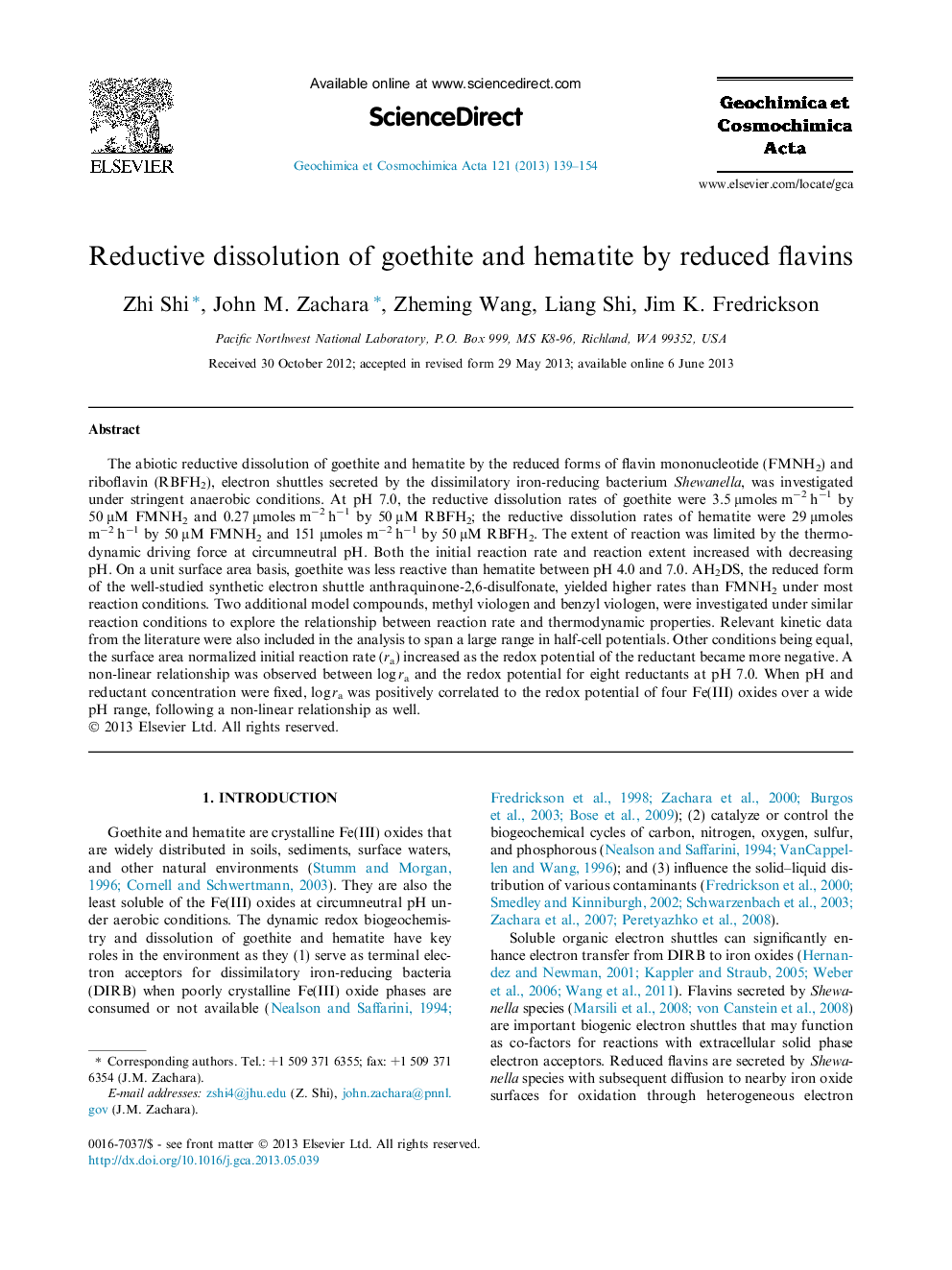| Article ID | Journal | Published Year | Pages | File Type |
|---|---|---|---|---|
| 6438896 | Geochimica et Cosmochimica Acta | 2013 | 16 Pages |
Abstract
The abiotic reductive dissolution of goethite and hematite by the reduced forms of flavin mononucleotide (FMNH2) and riboflavin (RBFH2), electron shuttles secreted by the dissimilatory iron-reducing bacterium Shewanella, was investigated under stringent anaerobic conditions. At pH 7.0, the reductive dissolution rates of goethite were 3.5 μmoles mâ2 hâ1 by 50 μM FMNH2 and 0.27 μmoles mâ2 hâ1 by 50 μM RBFH2; the reductive dissolution rates of hematite were 29 μmoles mâ2 hâ1 by 50 μM FMNH2 and 151 μmoles mâ2 hâ1 by 50 μM RBFH2. The extent of reaction was limited by the thermodynamic driving force at circumneutral pH. Both the initial reaction rate and reaction extent increased with decreasing pH. On a unit surface area basis, goethite was less reactive than hematite between pH 4.0 and 7.0. AH2DS, the reduced form of the well-studied synthetic electron shuttle anthraquinone-2,6-disulfonate, yielded higher rates than FMNH2 under most reaction conditions. Two additional model compounds, methyl viologen and benzyl viologen, were investigated under similar reaction conditions to explore the relationship between reaction rate and thermodynamic properties. Relevant kinetic data from the literature were also included in the analysis to span a large range in half-cell potentials. Other conditions being equal, the surface area normalized initial reaction rate (ra) increased as the redox potential of the reductant became more negative. A non-linear relationship was observed between log ra and the redox potential for eight reductants at pH 7.0. When pH and reductant concentration were fixed, log ra was positively correlated to the redox potential of four Fe(III) oxides over a wide pH range, following a non-linear relationship as well.
Related Topics
Physical Sciences and Engineering
Earth and Planetary Sciences
Geochemistry and Petrology
Authors
Zhi Shi, John M. Zachara, Zheming Wang, Liang Shi, Jim K. Fredrickson,
